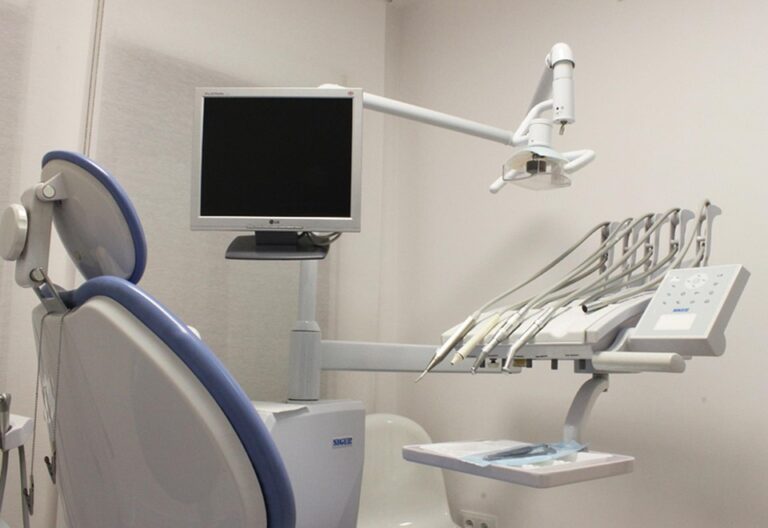
Can Dental Caries Cause Heart Problems?
It all started with a ache in my back tooth. I didnt pay it no mind for a week, I hoped it would leave. We all do that, right? But I didnt know this little tooth problem could be a door to a way bigger, scarier problem. One with my heart. I used to think my mouth and my body was two different things. What happens in one, stays in one. I was so wrong. This is the story of what I learned. It’s about the crazy but true link between dental caries (thats the science name for cavities) and bad heart problems. If you was like me and thought a cavity is just a small thing, you should keep reading. This whole thing changed how I see my health, and I think this teeth information could change you too.
Article Outline Overview
- My Wake-Up Call: It Started with a Simple Toothache
- Getting the Bad Guy: What Is Dental Caries?
- The Trip from Mouth to Heart: How Germs Get Around
- How The Body Fights Back: Swelling and Heart Disease
- Heart Problems Linked to Mouth Germs
- Are You a High Risk? Things I Learned to Look For
- My Action Plan for a Healthy Mouth and Heart
- Why You Can’t Skip the Dentist
- One Last Thing: Your Mouth is the Door to Your Body
My Wake-Up Call: It Started with a Simple Toothache
For me, this whole thing started not at a heart doctor, but at the dentist. The ache in my tooth got real sharp, a pain that just wouldnt stop. I couldnt ignore it. As my dentist looked at the X-ray, he told me what I already thought, I had a deep cavity. But then he says somethin that really surprised me.
"We need to fix this right away," he said, and he sounded more serious then I thought he would. "It’s not just about saving your tooth. An infection here can cause problems for your whole body, even your heart."
My heart? I was shocked. I musta looked confused cause he leaned in and explained it simple. He told me the mouth is full of germs, good ones and bad ones. When you get a cavity, its like a hole in your tooths defense wall. It lets the bad germs grow like crazy. If the rot and infection gets deep enough to reach the pulp—thats the soft inside part with nerves and blood—them germs now have a straight road right into your blood.
That one talk was my wake-up call. I went home with a temporary filling and I was real motivated. I started looking stuff up, talked more to my dentist and my regular doctor, and started to put together the pieces of something I didnt even know was a thing. I seen that not being serious about dental care wasn’t just risking my tooth, it was maybe risking my heart.
Getting the Bad Guy: What Is Dental Caries?
Before we link the dots to the heart, it’s important to get what we’re talking about. For years, I just called them “cavities,” but getting what dental caries is helped me get how bad it was.
Think of your tooth enamel like a strong wall, full of minerals. Its the hardest thing in our body. Its job is to protect the soft, weaker parts of the tooth inside.
Now, picture a army of attackers: germs. The main bad guy in this story is a germ called Streptococcus mutans. This little guy loves to eat the sugars and starches you eat and drink—soda, candy, bread, anything. When these germs eat sugar, they make acid as waste.
Here’s the problem: This acid is real bad for your tooth’s wall. When you eat somethin sugary, them germs go crazy and make an “acid attack” on your enamel. Your spit works to stop the acid and helps the enamel rebuild, but if the acid attacks happen too much and you dont clean your mouth good, the attackers win.
The whole thing happens in a few steps, my dentist explained it like this:
- Losing Minerals: The acid starts to pull minerals out of the enamel. This is the first step, and you see it as a little white spot on the tooth. At this step, you can still fix the damage if you clean good and use fluoride.
- Enamel Breaks Down: If it keeps going, the enamel wall is broken. A small hole, or cavity, shows up. This is when it cant fix itself no more.
- Dentin Breaks Down: Once it’s through the enamel, the germs get to the next layer, its called dentin. Dentin is softer and has more little holes than enamel, so the rot spreads way faster here. This is when you start to feel things or get pain, cause the dentin has small tubes that go to the tooth nerve.
- It Gets to the Pulp: This was the danger zone I was in. The germs and rot get to the pulp—the living center of the tooth. The pulp gets infected and swells up, and you get a real bad toothache. This is where the story isnt just about your tooth anymore, it’s about your whole body. The pulp has lots of blood vessels, and once the germs are in there, they got a ticket to your whole blood system.
Seeing it this way, I didnt see a cavity as just a hole no more. I saw it was a sickness that gets worse and a bad break in my body’s walls.
The Trip from Mouth to Heart: How Germs Get Around
This was the part that was real interesting and scary to me. How can germs from a tooth make trouble for something so strong and far away like the heart? The idea is actually pretty simple. Its called bacteremia.
Bacteremia just means theres germs in your blood. A little bit of this can happen even from just brushing hard or flossing, specially if you have sore gums (gingivitis). Your body’s defense system usually cleans them stray germs out fast.
But a deep, infected cavity or bad gum disease is a whole different thing. It’s not just a few germs here and there. It’s like a leaky pipe of bad germs going right into your blood, all the time.
I think of it like this. Your blood is a clean river that gives life to all the towns (your organs) on it’s sides. An infected tooth is like a poison pipe dumping bad stuff right in that river, all day every day.
Once these mouth germs, like Streptococcus mutans and other ones from gum disease like Porphyromonas gingivalis, are in the blood, they can go anywhere. And for some reason scientists are still figuring out, they seem to like the heart.
They can stick to broken parts of the heart, specially the heart valves or the inside wall of the heart (the endocardium). They can also grab onto fatty stuff called plaque that might already be in your arteries—the same plaque that gives you heart attacks.
So the trip is pretty direct:
Infected Tooth -> Pulp -> Blood Vessels -> Blood -> Heart
It’s a quiet attack from the inside that starts with not fixing a bad tooth.
How The Body Fights Back: Swelling and Heart Disease
It gets more complicated here. It ain’t just about germs sticking to your heart. A big part of the problem is how your own body reacts to the attackers: inflammation.
Inflammation, or swelling, is how your body naturally fights hurt or infection. When you get a cut, it gets red and puffy and warm. That’s inflammation, sending help to fight germs and start healing. For a short time, it’s a good thing.
But when you have a infection that wont go away, like a cavity you dont fix or gum disease that stays, your body is always a little bit swollen and fighting on the inside. That poison pipe is always leaking, so your body’s alarm is always going off.
This kind of long-term swelling is bad news for your whole body, specially your heart and blood system. Here’s what I learned about how it helps cause heart problems:
- It Helps Atherosclerosis: This is when your arteries get hard and narrow. The swelling from mouth germs can hurt the inside walls of your blood vessels. Your body tries to fix these hurt spots with cholesterol and other stuff, which makes plaques. More swelling means more plaque. It’s like trying to patch a leaky pipe again and again until the pipe gets all clogged up.
- It Can Make Plaques Break: Swelling can make the plaques you already have in your arteries more likely to break open. When a plaque breaks, the body hurries and makes a blood clot to “fix” the spot. But if that clot is big enough, it can block the whole artery. That stops blood to the heart (a heart attack) or the brain (a stroke).
- It Raises C-Reactive Protein (CRP): The liver makes CRP when there’s swelling anywhere in the body. Doctors check CRP levels to see how much swelling you got. Studies showed people with gum disease and bad mouth health have more CRP, and we know thats a risk for heart disease.
So the cavity-heart link is like a one-two punch. First, you got the germs themselves going to the heart. Second, you got the swelling all over your body that they start, which makes a dangerous place for your arteries and heart.
Heart Problems Linked to Mouth Germs
When my doctor and dentist talked about “heart problems,” I wanted to know what exactly. It’s not just some maybe risk. Bad mouth health is linked to some real serious heart and blood problems.
Infective Endocarditis
This was the one that scared me the most. Infective endocarditis is an infection of the inside wall of your heart and its valves (the endocardium). It happens when germs from somewhere else, like your mouth, go through your blood and stick to hurt parts in your heart.
The germs from your mouth, specially streptococci, are a main cause of this problem. They make clumps on the heart valves. This can break them and mess up how the heart pumps blood. It’s a really dangerous problem. You need antibiotics for a long time and sometimes surgery to fix or change the bad heart valves. People who already got heart valve problems are at a even bigger risk.
Atherosclerosis, Heart Attack, and Stroke
Like I said before, the swelling that don’t go away from tooth infections is a big reason for atherosclerosis. Scientists even found DNA from mouth germs inside the plaque they took out of peoples arteries. This really shows the germs arent just watching. They are part of what’s making you sick.
By making plaque grow faster and making it more likely to break, cavities you don’t fix raise your risk for a heart attack or stroke.
Other Possible Links
They’re still doing research, but bad mouth health is also being looked at for links to other heart and blood issues, like high blood pressure and a heart beat that ain’t regular. The thing they all have in common is usually that long-term swelling.
Are You a High Risk? Things I Learned to Look For
After learning all this, my next question was, “How much risk am I really in?” The truth is, anyone with cavities they haven’t fixed has a higher risk. But some things can make that risk into a real danger.
I made a checklist for myself:
- Not Cleaning Your Mouth Good: This is where it starts. If you dont brush two times a day, floss every day, and see a dentist, you’re asking the germs to come on in.
- Eating Lots of Sugar: A diet with lots of sugars and carbs is like fuel for the germs that make acid. It’s a straight attack on your tooth enamel.
- Already Having Gum Disease (Gingivitis or Periodontitis): If your gums are already puffy, red, or bleed, the wall to your blood is already weak. Cavities and gum disease together is a real dangerous mix.
- Heart Problems You Already Have: If you already got a heart murmur, a bad heart valve, or other heart problems you were born with, you are at a much higher risk of getting infective endocarditis from mouth germs.
- A Weak Defense System: Problems like diabetes, autoimmune diseases, or treatments like chemo can make it harder for your body to fight the tooth infection and the germs that get in your blood after.
- Smoking: Smoking hurts your gums, cuts down blood to the mouth (so it cant heal good), and adds to swelling, making you more likely to get tooth problems and heart disease.
Looking at this list was a big wake up call. I had to be real with myself about what I was doing wrong and what I had to change.
My Action Plan for a Healthy Mouth and Heart
Knowing stuff is useless if you dont do nothing. I couldn’t just be worried all the time. I had to turn it into a real plan. I worked with my dentist and doctor to make a simple but good plan to keep my teeth and my heart safe. This is what I promised to do, and I still do it.
Step 1: Changing My Daily Habits
- Better Brushing: I changed from a regular to an electric toothbrush, my dentist said it gets plaque off better. I brush for two whole minutes, two times a day. No excuses. I try to point the brush at my gums.
- Flossing Is A Must-Do: I used to be a person who only flossed sometimes. Not no more. I floss every night before bed to get the plaque and bits of food my brush cant get.
- Using a Germ-Killing Mouthwash: My dentist said to, so I started using a special germ-killing mouthwash to have less germs in my mouth.
Step 2: Looking at My Food
- Less Sugar: I started paying more attention to secret sugars in drinks, sauces, and boxed foods. I stopped drinking soda and drink water now. Sugary snacks are just a sometimes thing, not every day.
- Rinsing After I Eat: When I do have something sweet or with acid, I make sure to rinse my mouth with water after to wash out the sugar and stop the acid.
Step 3: Sticking With the Dentist
This was the big one. I learned that what I did at home was only half the job. Going to the dentist for cleanings is super important to get off the hard plaque (tartar) that I cant get off myself. I make my check-ups for every six months now and I never cancel. Ever.
Why You Can’t Skip the Dentist
This whole thing taught me a dentist is more than a “tooth doctor.” They’re a real important part of my health team. They are the first ones to see and stop problems that can cause issues in your whole body.
When I went back to get my real filling, my dentist took time to explain the amazing new tools they use. For my one cavity, a simple filling was all I needed. But he showed me how for a tooth that was more messed up, they might need to make a crown. He explained that they don’t just guess if it fits; they work with a high-tech digital dental lab. It uses scanners and computers to make a fix that’s perfect, like super super small.
He even told me about the stuff they use. “We have amazing choices now,” he said. “For a front tooth, we might use something called Emax cause its real strong and looks just like a real tooth. We send the computer scans to a special emax dental lab to get it made just for you.” He also said that for harder jobs, like if you need to replace a bunch of teeth with a bridge or implants, they work together with an arch dental lab. That lab focuses on fixing the whole bite for a person.
Hearing this made me trust them more. It showed me that dentists today are real exact, use new stuff, and are a big part of your whole body health. Skipping these visits isn’t just “forgetting about it”, it’s not taking care of a super important part of your body.
One Last Thing: Your Mouth is the Door to Your Body
If you only get one thing from my story, it’s this: Your mouth ain’t Las Vegas. What happens in there does not stay in there. It’s the main door to the rest of your body, and its health is all tied up with how healthy you are overall.
That ache in my tooth was one of the best things that ever happened for my health. It made me learn, change my ways, and look at my body as one whole thing. The link between cavities and heart problems isnt a scare story, it’s real science. When you take simple steps all the time to care for your teeth and gums, you’re doing way more than just stopping a cavity. You’re protecting your heart and putting effort into your future health. Don’t wait for a wake-up call like I did. Start today.








